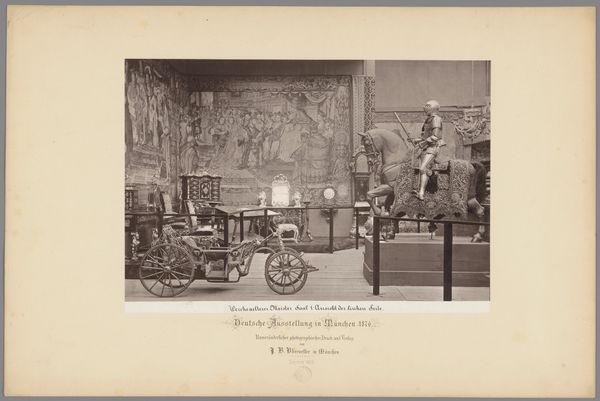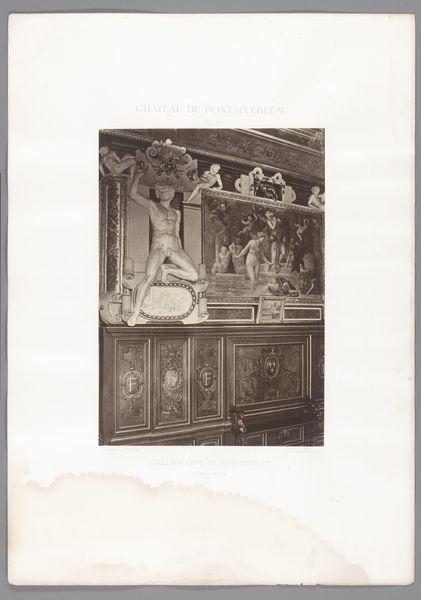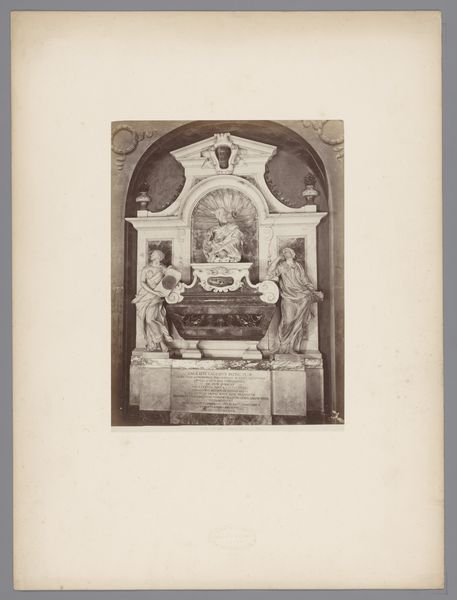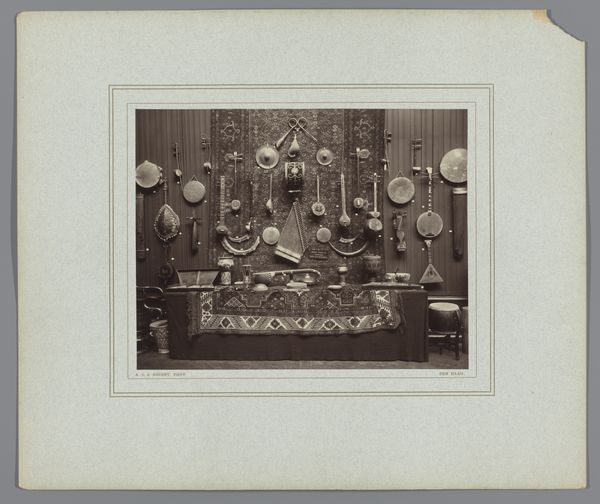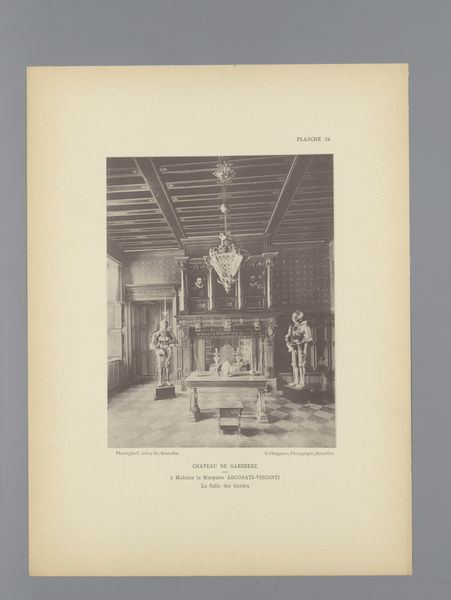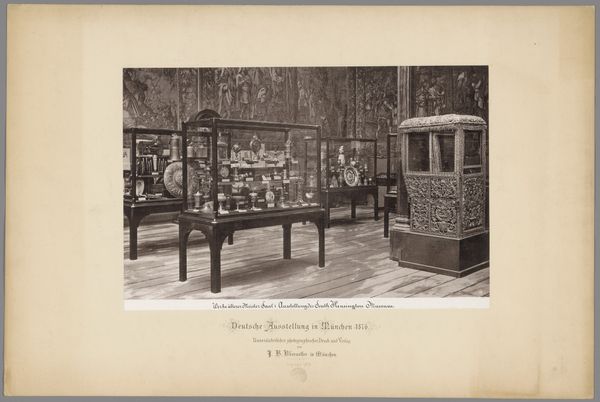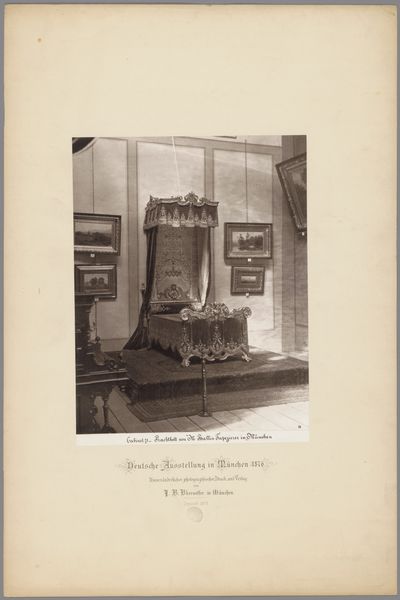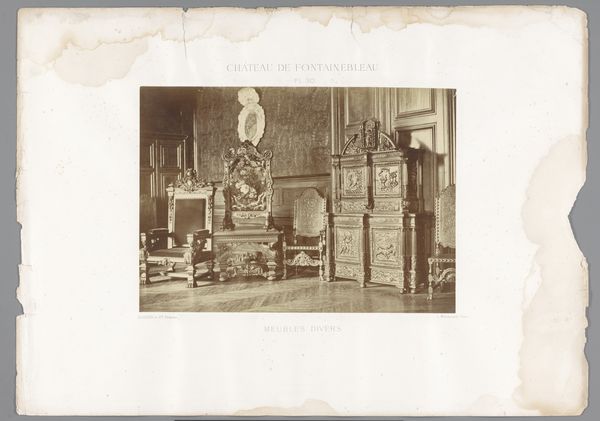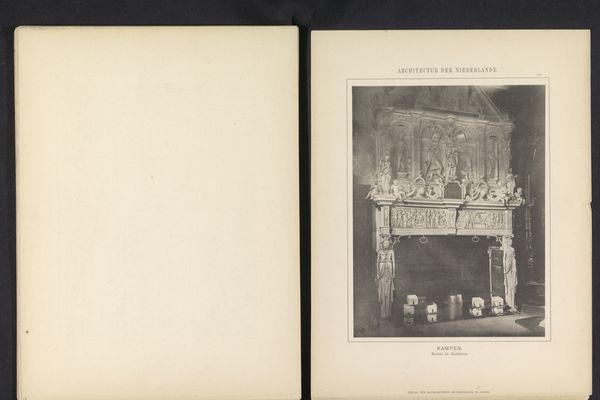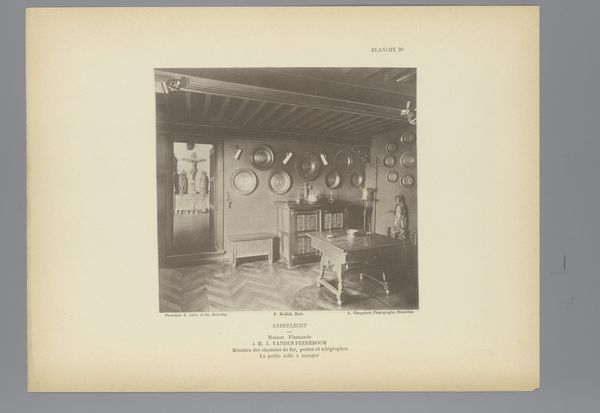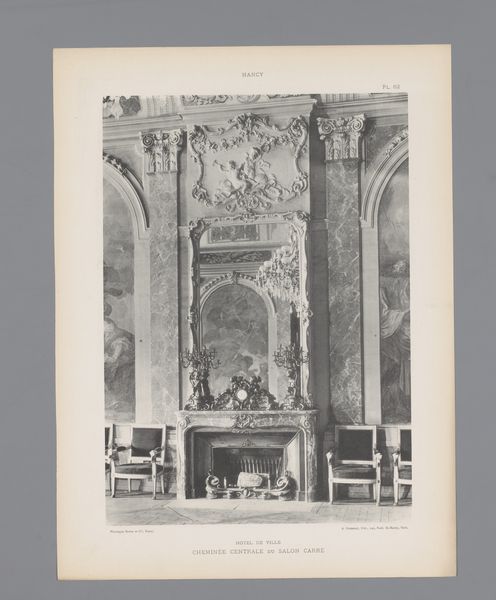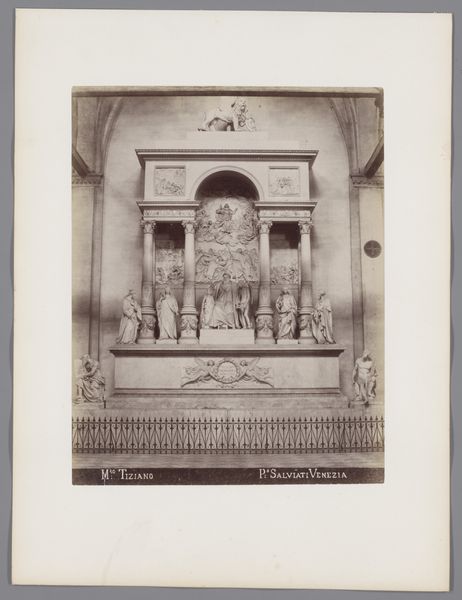
#
photo of handprinted image
#
aged paper
#
pale palette
#
muted colour palette
#
photo restoration
#
light coloured
#
white palette
#
soft colour palette
#
watercolor
#
historical font
Dimensions: height 296 mm, width 196 mm
Copyright: Rijks Museum: Open Domain
Editor: This is Johann Baptist Obernetter's "Opstelling van wapentuig te München," made in 1876. It seems to be a photograph of weaponry displayed for an exhibition. The faded sepia tone gives it such a historical feel. I'm struck by how meticulously the artifacts are arranged; it's almost staged. What can you tell me about it? Curator: Consider the labour involved in crafting, displaying, and documenting these objects. The photograph isn't just a neutral record, but a product of very specific socio-economic forces. These weren’t simply “art objects;" they were tools, status symbols, commodities traded across specific social structures. What does the inclusion of the cupid statue tell us about the culture of display at the time? Editor: I hadn’t considered the cupid figure. It’s like… a soft counterpoint to the harshness of weapons. Perhaps it represents a desire to sanitize the violence? To frame it as historical and, therefore, palatable? Curator: Exactly. And let’s think about the photographic process itself. Wet plate collodion printing demanded skilled labour and specific resources, revealing the economics intertwined with representation. How did the availability of photography shape understandings of history and artifacts at the time? Was it truly democratic and accessible, or were there clear class divisions associated with its consumption and production? Editor: That makes me see the image less as a transparent window and more as a designed construct shaped by its material processes. The 'staging' feels more intentional now, knowing the effort behind it. It seems designed to evoke admiration and, perhaps, to downplay the true, brutal nature of war. Curator: Precisely. By considering the materiality and the mode of production, we unlock the complex web of cultural values encoded within this seemingly simple photograph of weaponry. The arrangement, production and setting is equally if not more revealing than the pieces alone. Editor: This has really expanded my perspective. It's so interesting to think about photography not just as documentation but as its own form of labor.
Comments
No comments
Be the first to comment and join the conversation on the ultimate creative platform.
